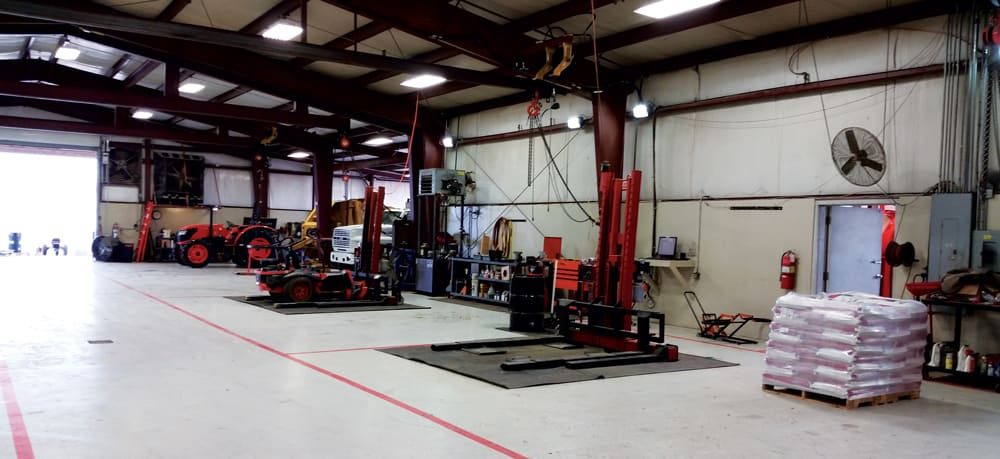Updated March 26, 2021
Your service department is one of the simplest and most profitable departments to run in your dealership — if you follow a program that defines expectations, supports an efficient workflow and recognizes the extra efforts of your service technicians.
To start the discussion, let’s set a baseline for revenues across your dealership. I recommend that 60% of your revenues should come from wholegoods sales, with a profit margin of 15%. Parts should account for 25% of revenues, with a margin of 40% and service should account for 15% of revenues. Since the service department is also the largest customer of the parts department, it has the potential to produce more profitability per person than any other department in your dealership.
Next, let’s break down the 6 steps that can turn a struggling service department or even an “OK” one into one that is profitable, can attract and retain skilled service technicians and impress customers.
1. Establish Processes
First, you must have written processes that you strictly follow. I’ve said it before and I’ll say it again and again, you cannot be successful without a good process. Processes help employees answer their own questions and keep your dealership from operating in fire-fighting mode. Your managers are responsible for creating those processes. If a question or issue arises that a process can’t solve, it’s time to rework a process.
2. Follow Good Billing Practices
Next up, look at your billing practices. Profitability in your shop starts with your labor rate and your labor rate is what you charge a customer who did not buy the equipment from you. The labor rate for your preferred customers is $10 below that figure.
You set your labor rate based on what you need to attract and keep technicians. You can get a general idea of the market by calling your local Ford dealership, not other equipment dealers.
Raising your labor rate can help you perform a higher quality of service because it allows you to invest in tools, training and attract good technicians. To find good A-level technicians, you need to be willing to pay $25-30 an hour, plus bonuses. Rural equipment dealers should be charging $120-$130 an hour and OPE dealers should be in the $85-$95 range.
If you’re already at those rates, I suggest you increase the rate by $10, so that you can reduce it back to the ranges I recommend for your preferred customers. Even raising your rates $5 can have a big impact. Let’s say you have 3 service techs who generate 6,000 hours. Raising your labor rate by $5 an hour can add $30,000 of net profit back to your dealership, without any investments in staffing or the service facility.
3. Flat Rate More Work
Seventy-five percent of all the work done in your service department has most likely been done before. Those jobs should be flat rated based on a B-level tech. You’ll know your flat rate is right if your B-level tech is completing those jobs within 80-100% of the time allotted.
“Set your labor rate based on what you need to attract and keep technicians…”
Your service manager may say that most jobs are unique and not able to be flat-rated, but I disagree. Flat rating, if done correctly on the majority of service work, can add another 25% to the total billable time in your service department. Yet, I see dealerships who don’t do any flat rating at all.
We’ve been working with the Equipment Dealers Assn. and the Northeast Equipment Dealers Assn. on a flat rating guide. The OPE flat rate guide is now available and we’re finalizing guides for compact tractors and side-by-side vehicles.
Keep in mind that occasionally your techs may put in more hours on a flat rate job, but, on average, you will earn more through flat rating more work.
4. Bill Time & Materials Correctly
Make sure you’re also billing correctly for unique jobs that can’t be flat rated and need to be billed by time & materials. The mistake I see most often for time & materials jobs is that you give them to your A-level technicians. Yet, that technician, if assigned a flat rate job, could potentially earn you 10 billable hours in an 8-hour day.
Use that A-level tech’s average efficiency on flat rate jobs over a 2-week period as a multiplier on your time & material jobs. For instance, most of my best technicians are operating at 120-125% efficiency. Use that as a multiplier on time & material work, so that you’re not losing time and being smart about how you’re using your best technicians.
5. Help Your Techs Be More Productive
The worst way to start each day is to have your service manager fielding calls from customers who have had breakdowns the night before and, at the same time, your techs are wandering around waiting to have their jobs assigned.
Instead, each day in your service department should actually start the night before. Your managers should spend a few minutes communicating with each technician about their current job, any issues the manager should address as well as the job they’ll take on next.
I’ve found after working with technicians for many years is that a tech’s brain never stops thinking if they’re trying to fix a problem. They’ll come in the next morning with a solution in mind and they’ll start producing for you right away. This simple process of end-of-day communication will turn your shop around.
Next, your technicians should always be clocked in to a work order or a job number and these should also have an established time for the techs to work toward. When I ask dealers if this is happening at their dealerships, they often say, “Most of the time.” Do your parts people charge customers for parts only most of the time? In the service department you sell time and I recommend tracking by the 10th of an hour. So, if you charge $95 an hour, every 6 minutes is worth $9.50. Multiply even 6 minutes of lost time each day per technician and you can see how the lost revenue builds up.
And, every piece of equipment should go through the triage process within 24 hours of coming into the dealership. During the triage process, you’re doing an initial assessment about what needs to be done, getting the parts needed for the job or ordering parts. You are also communicating with the customer.
Look for ways to bring the equipment back up to OEM specifications as well and communicate that to the customer. You can add 25-30% more billable time by looking for those opportunities — and create a more satisfied customer as well.
6. Set Up Bonus Programs to Drive Productivity
I recommend a program that’s simple to maintain and understand, yet encourages efficiency. For instance, each work order should have a set time for completion. If the technician completes the job in that timeframe, they earn a bonus of $2 per billable hour, if they beat the time, by up to 25% % they might get a $4 bonus for that job.
A tech who completes the job in 3.5 hours would earn a bonus or $4 per billable hour, or an extra $12 for that job. And, if the job is completed in 3.25 hours or less, the tech receives an extra $6 per hour, or an $18 bonus for that job.
In this program, the techs are rewarded for efficiency and the dealership gets extra time to sell. I’ve found that A-level technicians can earn an extra $15,000-$18,000 each year in bonuses. This approach also helps when it comes to hiring technicians. Technicians love the set time for a work order and a chance to earn more money.
Related Content
- 3 Questions to Ask Customers About Service Issues: One of the biggest hurdles Bob Clements says he must address with employees of dealerships is a breakdown of communication due to poor documentation. This may seem like a very simple problem to fix but it takes effort and a process.
- Adjusting Your Service Check-in Process: While all information gathered during the check-in process is important, there are a couple of pieces that rise above the rest.
- Earning More in the Service Department: Industry consultant Bob Clements of Bob Clements International breaks down ways you can easily and incrementally earn more in the service department, such as the best way to implement flat rating. Clements is recognized as the premier management consultant for outdoor power equipment, agriculture and power sports dealerships.






Post a comment
Report Abusive Comment